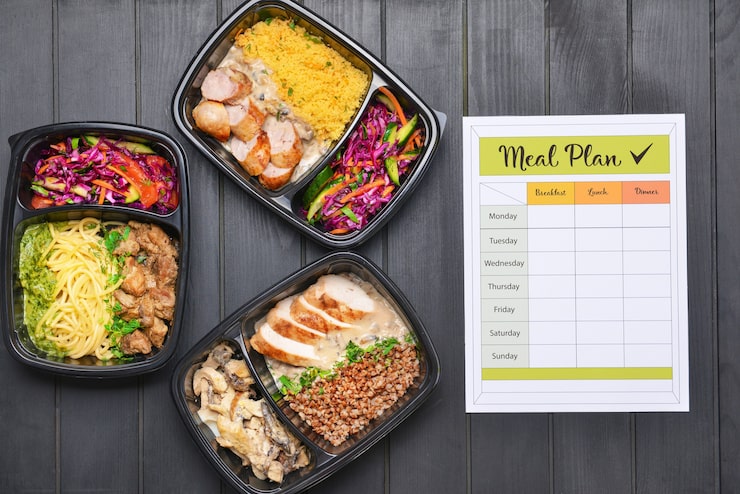Introduction: Why Students Struggle With Food Waste
Balancing classes, deadlines, part-time jobs, and social life leaves most students with very little time to cook or plan meals. Because of this:
- Ingredients expire
- Students buy more than they need
- Meals get skipped
- Leftovers aren’t used
This creates unnecessary food waste, and more importantly, money waste.
At Studelicious, we understand the reality of student life — busy schedules, limited kitchens, tight budgets. That’s why smart meal planning isn’t just convenient; it’s a survival skill.
This guide shows how meal planning students can reduce waste effortlessly while saving money, time, and energy.
How Smarter Meal Planning Helps Students Reduce Waste
1. It Prevents Overbuying
A planned weekly menu (even a simple one) prevents buying items you don’t use. This directly connects with:
- weekly meal planning for students
- student grocery list ideas
2. It Helps You Cook Only What You Need
Portion control matters when you’re cooking for one. Smart planning keeps your ingredients aligned with your meals.
3. It Saves Time During Exams
Students often waste food simply because they “didn’t get time” to cook it.
That’s where:
- time-saving student meals
- quick meals for college students
4. It Encourages Leftovers Management
Using leftovers creatively is one of the simplest ways to reduce waste and stress.
Step-By-Step Meal Planning Strategy for Students
1. Start With a Simple Weekly Plan
Don’t plan complicated meals. Just choose:
- 2 easy breakfasts
- 3–4 quick lunch options
- 3 dinners that reuse ingredients
This helps maintain the density of your primary keyword meal planning students in a natural flow.
2. Choose Meals With Overlapping Ingredients
This is the secret sauce.
Example:
- Buy tomatoes → use in pasta, wraps, omelettes.
- Buy chicken → divide for bowls, sandwiches, stir-fry.
- Buy rice → use for bowls, curries, fried rice.
This supports:
✔ easy student meals
✔ student-friendly meal ideas
✔ affordable student meal options
3. Create a Reusable Grocery List
Your grocery list should match your lifestyle:
- Busy student → quick recipes for busy students
- Living alone → meal prep for students living alone
- Low budget → budget meals for students
A weekly grocery list reduces impulse buying — one of the biggest food waste triggers.
4. Use the “3-Ingredient Rule”
If a food item only works for one dish, don’t buy it unless you can use it in three meals that week.
Example:
Spinach
– Smoothie
– Pasta
– Egg wrap
5. Prep Only What You’ll Eat
Meal prep doesn’t mean cooking everything at once. It means preparing exactly what removes friction:
- Wash vegetables
- Portion snacks
- Marinate proteins
- Pre-boil rice or pasta
Smart Grocery Shopping Habits (That Cut Waste Automatically)
1. Never Shop Without a Plan
If you enter a grocery store hungry, tired, or stressed — you WILL overbuy.
2. Stick to “Base Ingredients”
Choose versatile items like:
- Rice
- Eggs
- Pasta
- Oats
- Yogurt
- Beans
- Tortillas
3. Buy Frozen Instead of Fresh When Possible
Frozen vegetables reduce spoilage and offer savings.
4. Check the “Eat Me First” Shelf
Place foods that will expire soon at the front of your fridge.
Best Easy Student Meals That Reduce Waste
Below are recipes that support your SEO keywords easy student meals, quick meals for college students, and student-friendly meal ideas.
1. Tortilla Pizza
Uses leftover veggies + a tortilla.
2. Stir-Fry Rice Bowl
Rice + frozen veggies + leftover chicken.
3. No-Cook Yogurt Parfait
Supports: no-cook meals for students
4. One-Pot Pasta
Minimal dishes + minimal waste.
5. Loaded Veggie Wrap
Uses nearly any leftover ingredient.
Meal Prep Tips for Students Living Alone
- Prep 2–3 meals, not 7.
- Freeze small portions to avoid spoilage.
- Use airtight containers.
- Keep sauces separately to prevent sogginess.
This supports LSI keywords such as meal prep for students living alone, student kitchen meal ideas, and time-saving student meals.
Kitchen Organization Tips for Small Student Spaces
1. Use Clear Containers
You waste less when you can see what you own.
2. Label Everything
Dates help track food faster.
3. Keep “Grab & Go” Snacks Ready
Helps avoid ordering expensive takeout.
4. Store Food Properly
Storing correctly is one of the most effective waste-reduction habits.
Student Wellness: Stress-Free Eating Matters
Food waste often happens when students are overwhelmed by stress.
A calm mind leads to calmer decisions — including meal planning.
At Studelicious, we always remind students that food habits and mental wellbeing are connected. During high stress, many students even search for support resources like therapist Toronto or therapy near me in Toronto. This is normal — and planning meals ahead reduces that stress significantly.
FAQs
1. What is the easiest meal planning method for students?
Use a simple weekly plan with repeating breakfasts and mix-and-match lunches. Choose meals with overlapping ingredients.
2. How can students reduce food waste quickly?
Buy smaller quantities, freeze leftovers, and plan 3–4 simple meals for the week instead of 7.
3. Are no-cook meals good for busy students?
Yes. No-cook meals for students reduce prep time and prevent ingredients from spoiling before use.
4. What are the best budget meals for students?
Rice bowls, pasta dishes, wraps, omelettes, and frozen veggie stir-fry are affordable and low-waste.
6. How can Studelicious help students with meal planning?
Studelicious gives students quick weekly meal ideas, easy grocery tips, and simple planning guides that save time, money, and reduce waste.




